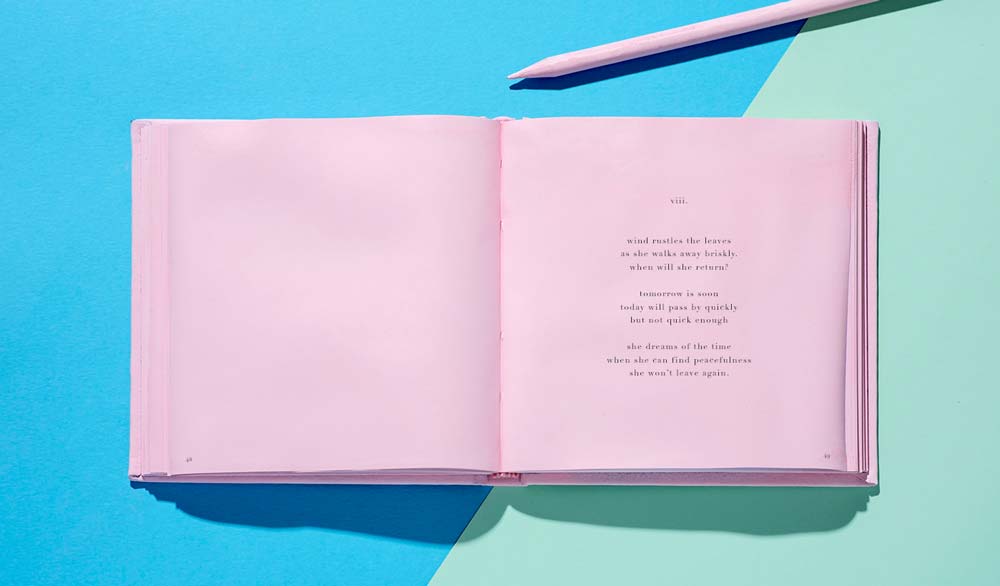How to publish a poetry book on your own
In the past few years, some of the bestselling books in the world were poetry books created by Instagram poets like Rupi Kaur, Atticus, Nayyirah Waheed, and Nikita Gill. These poets, whose work appears in visual form all over social media and garners hundreds of thousands of followers, often found success in choosing to self-publish poetry. This way, they controlled the look and feel of the finished product, and they were able to get their book into the hands of their followers faster than with traditional publishing.
Some of the most famous poetry books of all time were originally self-published and self-marketed, like Leaves of Grass by Walt Whitman. There’s a long tradition of success with self-published poets, and this new generation is finding an audience dedicated to buying print. Success as a poet doesn’t depend on traditional publishing—now, less than ever.
Have your own collection of poems? Here’s how to put your work in print, so it’s ready for the delight of your friends, fans, and followers:
1. Write a lot of poems
The average poetry collection is between 30 and 100 different poems. To create a unified collection of this size, you’re going to need a big body of work to pare down. So, get writing!
2. Choose your poems
Poetry collections aren’t just about putting all your poems together. They’re about creating a conversation between poems that are related and work together. Choose your poems around a particular theme, idea, style, subject—something with clear commonality to unify it.

3. Decide on your poetry book format
Your book format, in part, determines your number of poems. If you’re planning on black-and-white pages of text, then you’ll only need a trade book, and probably the smallest size. If your poems correlate with visual work, like sketches, photographs, or paintings, then you may want to explore photo books, which offer a range of sizes to complement any kind of work.
4. Organize your poems
Put your poems in order, so that the reader experiences them in the order that lets the conversation unfold. Putting the poems together and in order should feel like you’re writing a poem of poems.

5. Edit your collection
Just like poetry is about creating the deepest meaning with the most powerful, minimal language, you’ll need to ruthlessly edit your collection down to its most essential poems. Take out any poem that isn’t intimately connected to your theme and the others. Save the remaining poems for promoting your book, or for your next collection.
6. Design your page layouts
Poetry books are unique in that the white space around your text is as important as your text. Remember your poems need lots of room to breathe on the page, so people have space to think. Don’t put more than one poem per page, unless it’s a deliberate decision to link two poems that way. Let each one have its own page, and if its longer, as many pages as it needs to surround each part with plenty of white space.

7. Create your poetry book
The best part of self-publishing a poetry book is getting to make all the creative decisions yourself. You decide on paper type, cover, layout, size—all of it. Just be mindful that your book creation decisions have a direct impact on your ability to sell your self-published poetry book. You’ll need to balance your creative vision with the cost of creation so that you can still have a profit margin and sell it at a price your friends, fans, and followers will pay. To create a trade book, which is priced to sell, you can use Blurb’s free book design tool, BookWright.

8. Upload your book and order a proof
No matter how many times you edit your poetry book or how many times you and other people have read it on the screen, there will be inconsistencies and gaps you can’t catch until you’ve printed it. Order a single print copy and check every page and every margin. Read it backward, give it to a friend or professional proofreader—whatever it takes—to find all the mistakes. Your book cannot be edited or changed once it goes into distribution, so you’ll need to catch all the mistakes upfront.
9. Revise and proof your book again
Once you’ve made your edits, order another proof and double-check. Sometimes making changes causes new errors, and again, once your poetry book goes into distribution, it’s not possible to make any changes.
10. Set your book up for sale
Blurb books can be sold through the Blurb Bookstore, or they can be put into distribution through Amazon and others. Blurb photo books and trade books take different selling paths to Amazon, but if you’re working with a digital audience, they can buy your book from any link. How you set your poetry book up for sale depends on the best fit for your profit goals and your audience.

If you’re a poet, this is the time to shine. You have more opportunities than ever to build your audience and more platforms for selling your self-published poetry book. The work you are doing to give language to the human experience and illuminate those human moments belongs in the hands of your readers. Put your poems in print and open new channels—not only for profit—but for getting your words into the world.

